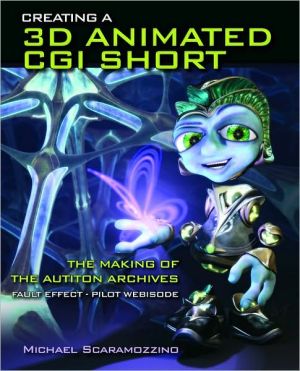

 |

|

The average rating for Creating a 3D Animated CGI Short: The Making of the Autiton based on 2 reviews is 4 stars.
Review # 1 was written on 2016-12-16 00:00:00 Steven Robertson Steven RobertsonThis was one of those rare books that made me a different person after I read it. It opened my mind and freed me from the assumptions and constraints of my previous way of looking at facial animation. There's so much bullshit out there about certain techniques and so many other people out there just repeating what they heard someone else say. Jason says nah, let's think about and actually look at what's happening to a face when it moves. At a certain point, it becomes a reference book and less readable, but that's not a bad thing. It's a book I keep consulting. I don't necessarily agree with everything he says, but he presents a perspective that really helped me see the world and facial animation in a new way. I read the second edition and it's mainly about building blendshape-based rigs, but there is a section about building out joint-based rigs. |
Review # 2 was written on 2013-10-06 00:00:00 Vernon Baker Vernon Baker(More pictures at parkablogs.com) If you're learning 3D character modeling, this book might be for you. Specifically, it deals with modeling and animating the head. Jason Osipa has written a very good step-by-step tutorial book. This book touches the following subjects: * Learn visimes and lip sync techniques * Construct a mouth and mouth keys * Explore the process of facial landmarking * Master the cartoon techniques of squash and stretch * Harness the latest advanced blend extraction tools * Create interfaces for your faces * Understand skeletal setup, weighting, and rigging In short, this book is about modeling and rigging the face. Modeling will include creating the head with the different blend shapes for the mouth to simulate visimes. There's not much on texturing and rendering. For texturing, it teaches enough to get the basic UV mapping right on the face. The tutorials have plenty of accompanying screenshots with clear descriptions. I have absolutely no problems following along. All the chapter files are located in a CD provided. The software package used is Maya. The instructions written are not tied to any specific Maya versions, meaning it will remain timeless unless 3D conventions are changed (e.g. polygons are not called polygons in the future). Users of different versions of Maya should have no problems following along. Users of other 3D programs will have to take note that the blending and weighting tutorials are used with a Maya interface. That might make following hard or impossible, but I'm speaking from a I-only-know-Maya perspective. As for modeling, the lessons are universal and can be followed with any 3D software. But most 3D instructional books already have human modeling tutorials. This book is suitable for beginner to advanced users. It's a very good book for learning in depth facial modeling and animation. Maya users will gain the most from this book. |
CAN'T FIND WHAT YOU'RE LOOKING FOR? CLICK HERE!!!